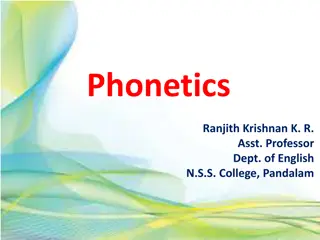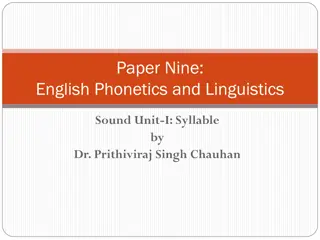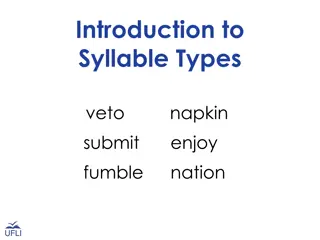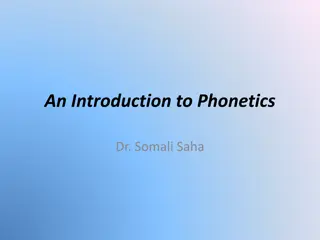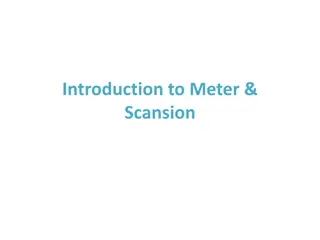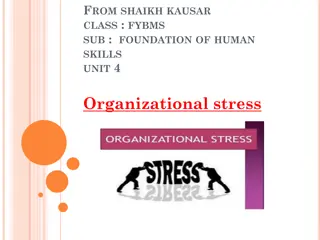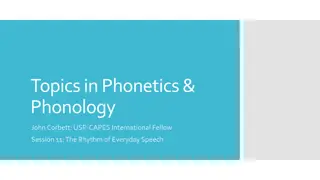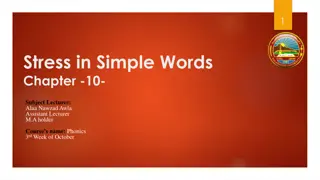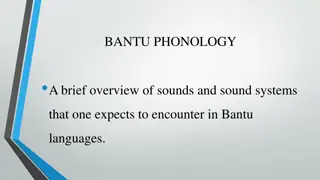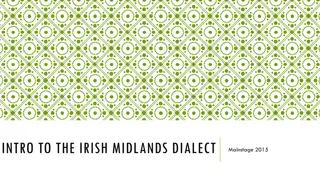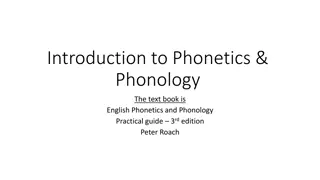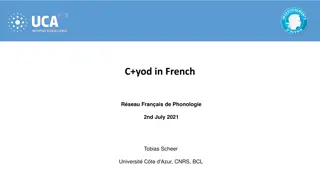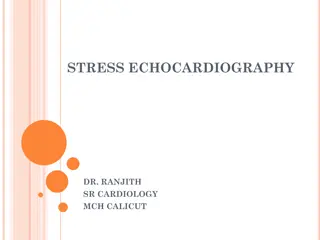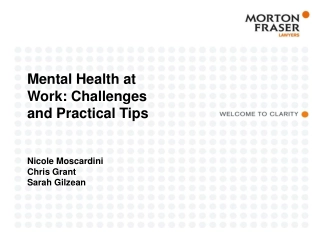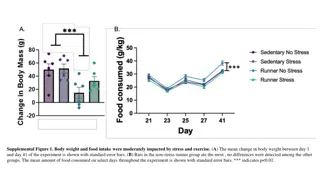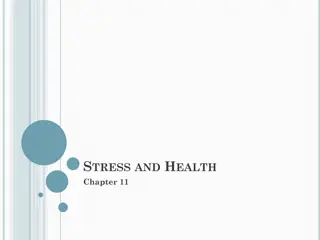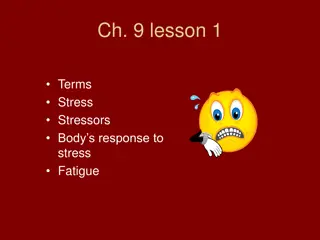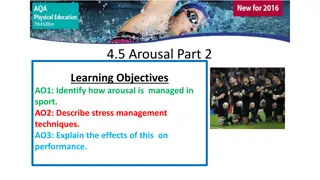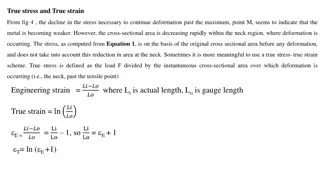Understanding Syllable Structure and Stress in Phonetics and Phonology
Explore the concepts of syllable structure and stress in phonetics and phonology through examples like analyzing the number of syllables, phonemes, and stress patterns in words. Dive into syllable boundaries, onsets, nuclei, and rhymes in words and phrases to deepen your understanding of English phonetics.
Download Presentation

Please find below an Image/Link to download the presentation.
The content on the website is provided AS IS for your information and personal use only. It may not be sold, licensed, or shared on other websites without obtaining consent from the author. Download presentation by click this link. If you encounter any issues during the download, it is possible that the publisher has removed the file from their server.
E N D
Presentation Transcript
Phonetics & Phonology John Corbett: USP-CAPES International Fellow Session 5: Syllable structure and stress
This session: Syllable structure Word stress Morphologically simple and complex words Rules governing word stress Today s session
Thinkaboutthe wordabove. Wecansaya number ofthingsabout it: It has FIVE orthographical letters: <a>, <b>, <o>, <v>, <e> Howmany syllables and whereare the divisions? It contains FOUR phonemes: / b v/ There are TWO syllables: / / and /b v/ or A#BOVE The firstsyllableispronounced with lessforce than the second (it is unstressed) The second syllableispronounced with more force than the first(it isstressed): / 'b v/
Discussin pairs/threes: How many syllablesdo the followingwordshave? Where are the divisions? Howmany syllables and whereare the divisions? AGAINST ENTER EQUIP SAINT ANDREWS
Discussin pairs/threes: How many syllablesdo the followingwords have? Where are the divisions? Possibleanswers (accents vary!): Howmany syllables and whereare the divisions? A#GAINST EN#TER ENT#ER / kw p/ / kw p/ (note that spellingdoesn t help much here) SAINT#AN#DREWS SAIN# TAN#DREWS SAIN#TAND#REWS
Syllable Onset Rhyme Syllable structure: 3 mainparts Nucleus Coda CC V CC pl i: zd
Identify thesyllableboundaries, andthentheonset, nucleus and rhyme (for you) in eachsyllableofthefollowingwordsand phrases: Onset, nucleus andrhyme INTERNATIONAL THE STRAIN THIS TRAIN
Some Englishaccentsprefer theonsetofa syllabletobe a consonant where possible, so: IN # TER # NA # TIO # NAL Issuestothink about Do you? Do THE STRAIN andTHIS TRAIN havethe samesyllableboundary for you? THE#STRAIN andTHI#STRAIN
All languagesmake use ofdifferences in pitch, loudness andspeed (tempo). Together, pitchloudness & tempo contribute tothe rhythm ofspeech. Languagesdiffer in the waythey make rhythmicalcontrasts. Syllablelength(longversus short) is a crucial feature ofsyllable- timed languages, based onLatin(=Romance languages, like Portuguese). Syllableand stressed timing Stress (stressed versus unstressed) isa crucial feature ofstress- timed languages(=Germaniclanguages, likeEnglish). Pitch(high andlowtones) isa crucial feature ofmanytonal languages(=Asianlanguages, likePutonghuaandCantonese). Englishspeech makesuse ofstressed syllables, producedat roughlyregular periods oftime, andseparatedby anirregular number ofunstressed syllables.
Pairwork/In threes Spoken in isolation, some syllables in English words have greater stress than others. Identify the syllables that have themost stress in the following 3-4 syllable words: Word stress /p te t / / p :tm nt/ /r le n p/
Pairwork/In threes Spoken in isolation, some syllables in English words have greater stress than others. Identify the syllables that have themost stress in the following 3-4 syllable words: Word stress /p te t / / p :tm nt/ /r le n p/ Note that here I have placed the stress mark before the consonant, on the assumption that the syllableboundary isthere.
What needs to be taken into consideration when we place the stress in English? Is the word morphologically simple or complex (egare there affixes; is the word a compound or not)? What grammatical category does the word belong to? How many syllablesare in the word? What is the phonological structure of the syllables (onset, nucleus and coda)? Rules for stress placement
Morphologicallysimplewords: canyoudeduce anyrules? 2-syllable verbs & adjectives: pla tr kt ra v apply attract arrive enter open envy nt p n nve or nvi A sample of stress- placement rules s st assist equal i:kw l d va n la v k r kt t t l i:v n divine alive correct total even
Morphologically simplewords: can you deduce anyrules? 2-syllable verbs& adjectives: pla tr kt ra v s st nt p n nveor nvi i:kw l apply attract arrive assist enter open envy equal Some stress- placement rules(1) d va n la v k r kt t t l i:v n divine alive correct total even Stress the firstsyllablewhen: The second syllable contains a short vowelandonlyone (or no) final consonant. Stress the second syllablewhen: thesecond syllable contains a longvowel, a diphthongor endswitha consonant cluster
Morphologicallysimple3-syllable words. Figure out the rules? (They re different for verbs andfor nouns...) Verbs ka nt nt te n encounter entertain Some stress- placement rules(2) d t :m n determine resurrect r z r kt Nouns m m z d z :st mimosa disaster p te t s n ps s potato synopsis kw nt te quantity emperor mp r s n m k st de cinema custody
Morphologicallysimple3-syllable words. Figure out the rules? (They re different for verbs andfor nouns...) Verbs Some stress- placement rules(2) ka nt nt te n encounter entertain d t :m n r z r kt determine resurrect The final syllableis stressed whenit containsa longvowelor diphthongor ends withmore thanoneconsonant; The penultimatesyllableis stressed whenthe lastsyllableends witha short vowelandnotmore thanoneconsonant
Morphologically simple3-syllable words. Figure out the rules? (They re differentfor verbsandfor nouns...) Nouns mimosa potato quantity cinema m m z p te t kw nt te s n m d z :st s n ps s mp r k st de disaster synopsis emperor custody Some stress- placement rules(2) Ifthe final syllablecontains a short vowelor / / it isunstressed. Ifthe penultimate syllablecontains a longvowel or a diphthong, or if it ends withmore thanone consonant, then it willbestressed. Ifthe final andpenultimate syllablesboth contain a short voweland the penultimate syllableendswith not more thanone consonant then the first syllablewillbestressed. PHEW!
Ifyoustudy the previousrules, youwillsee that stress generally tends tobe placedonsyllablescontaining: a longvowel a diphthong more than one final consonant Tendencies andexceptions But ifyou have a 3-syllable morphologicallysimplenoun ending in a diphthongor long vowel or more than one consonant...the stress goes on the firstsyllable: nt l kt lk la p r da z intellect alkali paradise
What needs to be taken into consideration when we place the stress in English? Is the word morphologically simple or complex (egare there affixes; is the word a compound or not)? What grammatical category does the word belong to? How many syllablesare in the word? What is the phonological structure of the syllables (onset, nucleus and coda)? Rules for stress placement: recap
Morphologicallycomplexwordsare polysyllabicbecause they: combine a stemwith affixes, ieprefixes and sufixes, e.g. per-, sub-, - ion, -ate, etc. (Because some of these affixes are inheritedfrom other languages, likeLatin, the distinctionbetween simpleand complexisnot always easy to draw.) Examplesinclude un+pleasant, de+stress, magnet+ic, person+ality. Stress placementin morphologically complexwords Combine two stems (plusany affixes) into a compoundword, likeice cream or badtemper+ed.
Pairwork/In threes Whateffect mighttheadditionofaffixes haveonwordstress? The impactof affixesonword stress Saythe followingwordsout loudandconsidertheimpact(orlack ofit) ofthe additionofanaffixontheword stress: p :s n pl z nt m gn t p :s n l te npl z nt m gn t k person pleasant magnet personality unpleasant magnetic
Pairwork/In threes Whateffect mighttheadditionofaffixes haveonwordstress? Saythe followingwordsout loudandconsidertheimpactofthe additionofanaffixonthe wordstress: The impact of affixes on word stress (1) the affix takes the primary stress: person p :s n p :s n l te personality (2) the primarystress remains where it originallywas: pleasant pl z nt n pl z nt unpleasant (3) the presenceof the affix moves the stress to a different syllable: magnet m gn t magnetic m g n t k
Whathappenswhenyouadda suffix tothisword? Howgoodare yourears? p n p ni:z Japan Japanese
The general rules onthe previousslide canhavesome complicated variations. For example, the stem Japan carries primarystress onthe secondsyllable. But whenyouaddthesuffix -ese , the primarystress moves tothesuffix (rule 1) andsecondarystress moves from the secondsyllabletothe firstsyllableofthe stem (rule 3), whichchanges the qualityofthevowels in thestem: Complications p n Japanese p n i:z Japan
Youdont havetolearnthese by heart, obviously, but it is interestingtonote some ofthosesuffixes thatgenerally(1) carry primarystress (2) don t affectstress placementand(3) change stress placementin the stem. Listenout for them. Carrying primary stress No change in stress Change in stress -ain (verbs only): entertain -able: comfortable -eous: courageous For your interestand amusement -ee: refugee -al: refusal -graphy: photography -eer: mountaineer -en: widen -ial: proverbial -ese: Portuguese - ful: wonderful -ic: climatic -ette: cigarette -ing: amazing -ion: perfection -esque: picturesque - ish: devilish -ity: tranquillity etc etc etc
Youdont havetolearnthese by heart, obviously, but it is interestingtonote some ofthosesuffixes that generally(1) carry primarystress (2) don t affectstress placementand(3) change stress placementin the stem. Listenout for them. Carrying primary stress No change in stress Change in stress -ain (verbs only): entertain -able: comfortable -eous: courageous For your interestand amusement -ee: refugee -al: refusal -graphy: photography -eer: mountaineer -en: widen -ial: proverbial -ese: Portuguese - ful: wonderful -ic: climatic -ette: cigarette -ing: amazing -ion: perfection -esque: picturesque - ish: devilish -ity: tranquillity etc etc etc Warning: thesesuffixes don talwayshavethe effects shownabove. Partofspeech andphonologicalstructure alsoimpact. And people differ. The purposeofthis slide isreallytomake youmore aware.
Prefixes dont behave withthe sameregularity as suffixes. No prefixof1 or 2 syllablescarriesprimarystress in natural conversation(thoughin contextyoumightput primarystress on the prefix for contrastivepurposes). Sowecansaythatprefixes generallydon t affectstress placement(rule 2), unless... A quickword aboutprefixes n pl z nt DICK: Thatwasa very unpleasantparty. JANE: Didyousay pleasant ? n pl z nt DICK: No, I saidit wasunpleasant.
And(almost) finally... compound words Compoundwordsare made up oftwostems andassociated affixes, likeloudspeakerandbad-tempered. The questionis whetherthe primarystress shouldgo onthefirst orsecondelement ofthe compound.
In pairsorthrees (ifwehavetime) Canyou figure out whenthe first stem orthe secondstem gets primarystress? General rules for stress placementon compounds la dspi:k ta pra t loudspeaker typewriter s nra z bad-tempered b d t mp d sunrise s k kl :s sju:tke s second-class suitcase ti:k p three-wheeler ri: wi:l tea-cup
Generally...whenthe initialword isadjectivalornumeric, the primarystress goesonthe secondword. Whenthe initialwordisa noun, the stress goesonthefirstword. la d spi:k ta p ra t loudspeaker typewriter General rules for stress placementon compounds bad-tempered b d t mp d s n ra z sunrise s k kl :s sju:t ke s second-class suitcase three-wheeler ri: wi:l ti: k p tea-cup BUT there are manyexceptions, often wordsthat are nowthought ofas individual units andnotcompounds, eg gri:n ha s nt lm n greenhouse gentleman adj+noun patterns
There are a number of2-syllable wordsin Englishthat havethe samespellingas noun/adjectiveandverb, but thestress placement differs. Howdo youpronouncethe followingwordsas N/A orV? Andfinally... word-class pairs Noun orAdjective Verb abstract abstract conduct conduct contract contract desert desert export export insult insult record record
There are a number of2-syllable wordsin Englishthat havethe samespellingas noun/adjectiveandverb, but thestress placementdiffers. Note the changefrom a full toanunstressed vowelin certain wordsas a consequenceofthe shift in stress placement. Andfinally... word-class pairs Noun orAdjective Verb bstr kt k nd kt k ntr kt d z t ksp :t ns lt r k :d b str kt k n d kt k n tr kt d z :t k sp :t n s lt r k :d abstract abstract conduct conduct contract contract desert desert export export insult insult record record
Individual Englishwords are made upofstressed andrelatively unstressed syllables(we cansuggest a 3-part distinction: primary andsecondarystress, andunstressed syllables, in polysyllabic words) Unlike Portuguese, English utterances are stress-timed: there is a regular beat of stressed syllables separated by an irregular number of relatively unstressed syllables. (Portuguese speakers pay more attention to length, and so syllables get relatively equal weighting in stress). The placement ofstress depends ona number offactors (morphologicalcomplexity, partofspeech, phonologicalstructure ofthe syllable) andthere is some individual variation... As a roughrule, primarystress isplacedonsyllableswherethe nucleus is a longvowelor diphthong, orwhere the codais made upoftwoormore consonants. But partofspeech and morphologicalstructure cancounteractthisrule. The moral...? Summingup
Individual Englishwords are made upofstressed andrelatively unstressed syllables(we cansuggest a 3-part distinction: primary andsecondarystress, andunstressed syllables, in polysyllabic words) Unlike Portuguese, Englishutterances are stress-timed: there isa regular beat ofstressed syllablesseparatedby anirregular number ofrelativelyunstressed syllables. (Portuguese speakers paymore attentionto length, andsosyllablesget relativelyequal weightingin stress). The placement ofstress depends ona number offactors (morphologicalcomplexity, partofspeech, phonologicalstructure ofthe syllable) andthere is some individual variation... As a roughrule, primarystress isplacedonsyllableswherethe nucleus is a longvowelor diphthong, orwhere the codais made upoftwoormore consonants. But partofspeech and morphologicalstructure cancounteractthisrule. The moral...? Listen!!! Summingup
See younext week whenwe willdo thesecondclasstranscription test andwe llreview the course contentsofarbefore turningour attentionto (a) Portuguese-Englishdifferencesand Preview (b) howtoteach/learnEnglishpronunciationas anadult. Havea goodweek!




